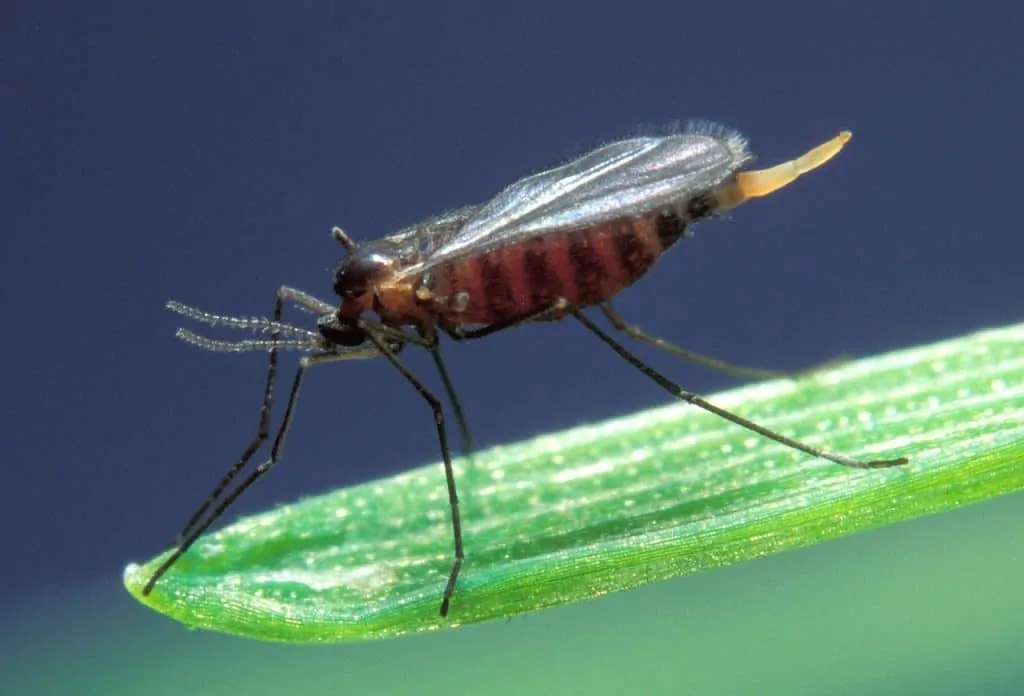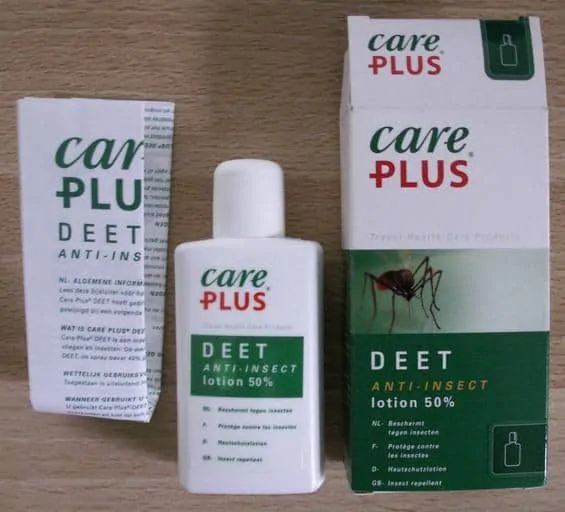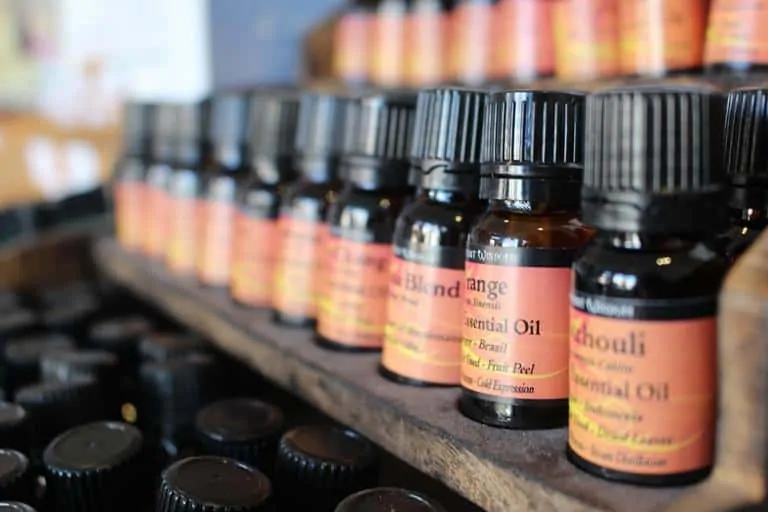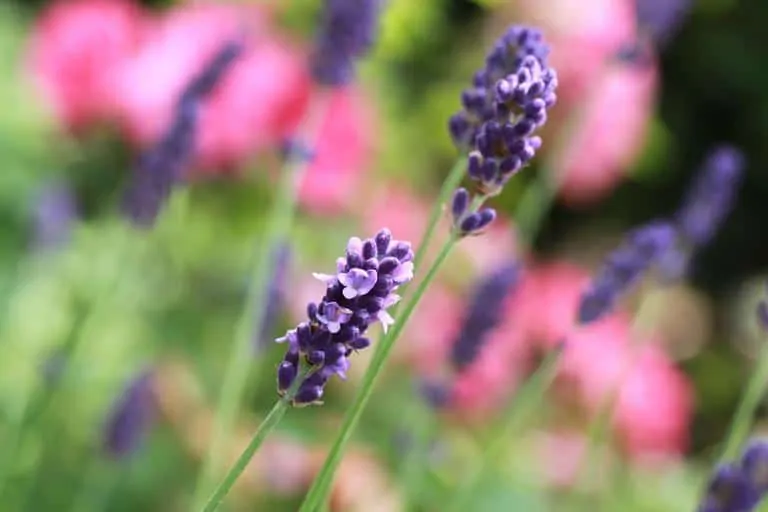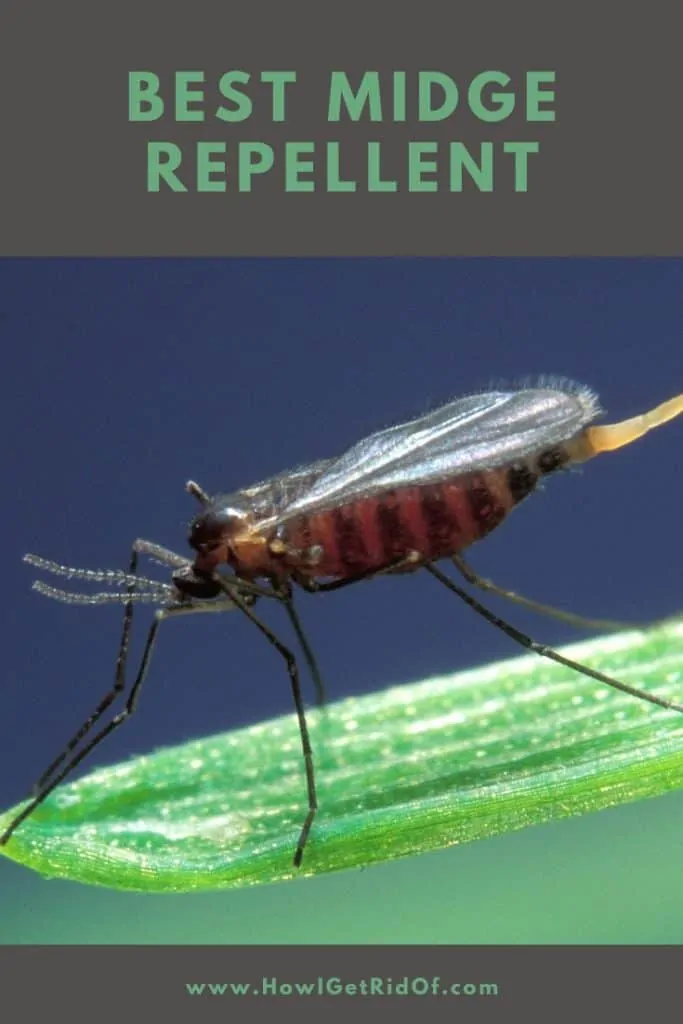It’s summer, which means your fun in the sun is about to be combated with a plethora of flying and biting insects. Mosquitoes, gnats and midges, oh my!
There are plenty of insects to contend with in the summer heat, but midges are some of the most annoying. Their bite can be painful and they swarm in large numbers. Though they have a short life span, midges can reproduce rapidly and an infestation can quickly get out of control on your property, making enjoying the outdoors difficult and frustrating to say the least.
If you’re being plagued by flying insects that look like mosquitoes but are a bit smaller, you may be dealing with midges. In today’s article, we are going to learn more about midges and talk about how you can get rid of them once and for all using a midge repellent and other tried and tested methods.
Let’s begin.
Contents
What Is A Midge?
Midges are small, flying insects that sometimes resemble mosquitoes.
Are you dealing with a swarm of flying insects around your home? If you think they’re probably mosquitoes, think again. Also known as no see ums, sand flies, or plunkies, midges are small winged insects which are often confused for mosquitoes due to their behavior and appearance.
While they do look an awful lot alike, midges and mosquitoes are a different species. That said, they do have some of the same physical and temperamental characteristics. Like mosquitoes, some species of midges bite and feed on blood hosts like people, pets and livestock.
However, other species of midge insects feed on nectar. Midge larvae are highly beneficial, feeding on other insects and decomposing plant and animal matter. Furthermore, midge insects are a popular food source for plenty of other beneficial wildlife.
Still, when you have a yard full of midges, you’re probably not thinking about all the good they do, especially if you’re dealing with biting midges.
The below video discusses how biting midges feed on human hosts and why.
There are numerous species of midges throughout the world and they live on every continent where there is water including Antarctica. Like mosquitos, midges are attracted to water sources and need water to survive.
Midges have clear wings, reddish, brown bodies, and six legs. Male midges have antennae that look almost fuzzy, which is a key characteristic that sets them apart from females. Another key characteristic? Male midges don’t bite.
But then again, not every species of midge bites either. In fact, there are two types of midges including non-biting midges and biting midges.
For the most part, non-biting midges are considered a nuisance pest. They don’t harm people or pets and are generally just annoying as they buzz around in large swarms. Non-biting midges are around 1/16th to ½ an inch long and look very similar to mosquitoes in size and appearance. Again, they do not bite, so don’t worry.
Unfortunately, their smaller midge cousins do bite. Biting-midges are usually less than 1/8th of an inch and, despite that puny size, are known for their painful bite. While biting-midges are not dangerous to people, they can pass on serious diseases to livestock. In fact, midges are blamed for a deadly disease known as Blue Tongue virus that is particularly deadly in North American sheep.
While biting midges may not be dangerous to people, it’s still important to manage and control an infestation using either a midge repellent or some other form of pest control. But in order to do this, it’s wise to make sure you are indeed dealing with midges and not mosquitoes or other small, biting pests in order to treat the problem properly.
Let’s learn more.
Best Midge Repellent – How To Identify A Midge Problem
Midges swarm in large clusters that look like clouds of insects.
Before you buy midge repellent, let’s make sure you’re really dealing with midges and not mosquitoes. While it is true that the two insects can look similar, there is a way to tell them apart. That is, if you’re willing to stick around long enough to investigate them.
Unlike mosquitoes, midges do not have long, needle-like mouths (also known as proboscis) with which to feed. This is one of the main reasons biting midges cannot transmit diseases to their human hosts.
Another way to tell a midge from a mosquito is that midge insects swarm in very large colonies that look similar to clouds. Mosquitoes do swarm, but not as closely together as midges.
Biting midges are also much smaller than mosquitoes and resemble small flies. This may be one of the reasons they are referred to by some as sand flies or no see ums. Most people won’t even notice one or two biting-midges and will only realize they’ve been bitten after they feel the bite or once they feel the itch of the bite.
Best Midge Repellent – Why Do I Have Midges?
Male midges can be identified by their furry looking antennae.
If you have an abundance of midges on your property, then chances are you also have an abundance of water. Midges are attracted to water sources and in fact need water sources to survive and breed. These insects prefer stagnant water or slow moving water, but can also be found in moist sand or mud, near swamps, and even hanging around pet water bowls that have been left out for a few days.
Other common attractants for midges include:
- Bird Baths
- Yard Ponds
- Bogs
- Swamps
- Over-Watered Flower Beds and Flower Pots
- Slow-Moving Streams
- Grassy Overgrowth
- Old Tires
- Overturned Garbage Bin Lids Filled With Water
- Water-Filled Buckets
- Oceans
- Sand Boxes
- Muddy Earth
- And Moist Soil
- Lights
And don’t forget, while midges are attracted to water sources, they are also attracted to food sources. Female biting midges in particular will be on the hunt for a protein source rich in iron, which your blood is full of. Midges are also attracted to the carbon monoxide that you, your pets, or your livestock exhales with every breath.
Amazingly, biting midges can smell carbon monoxide from up to 200 meters away. Like mosquitoes, biting midges are also attracted to darker clothing, overgrown yards and debris. They are also most active during the twilight hours of dawn and dusk, so watch out and make sure you invest in that midge repellent if you plan on being outdoors during those times.
But is midge repellent your only form of protection against these annoying pests? Of course not! Let’s take a look at some other common forms of midge control you can use.
Most Common Methods Of Midge Control
Midges may swarm in large numbers but they can be easy to control with the right products. And methods.
Midge repellent is a popular form of midge control because it works and can be used on individuals, people, pets, and sometimes even clothing and belongings. That said, using a repellent isn’t the only option you have to protect your home and family from midges.
Some other common forms of midge control include traps like sticky traps, sugar traps, and bug zapper traps. You can also use bug nets like mosquito nets or wear longer clothing to protect yourself from biting midges.
That said, if you are dealing with a particularly large midge infestation, you still may want to invest in a midge repellent so you can enjoy your yard again. Some common midge repellents include sprays, candles, and scent repellents. Of course, you can also use home remedies and make your own repellents at home.
Intrigued? Then keep reading. We are going to talk about some of our favorite midge repellent products you can purchase and then go over some of the best DIY methods you can use to get rid of midges using ingredients you already have at home.
Best Natural Midge Repellent Products
Natural midge repellents are often safe to use on children and pets.
Yes, midges are annoying, but since they don’t transmit diseases to people, they are more often considered a nuisance pest when it comes to residential neighborhoods and homes. With that in mind, many people prefer to go the natural route when it comes to midge repellent and use products that don’t require the use of harsh chemicals or toxins in order to work.
Is it possible? Of course it is! We love using natural products for pest control because they are usually not only safe for people and pets, but they are also often the safest option of pest control for the environment.
That said, it’s important to note that not all natural midge repellent products are as effective, so we suggest you do plenty of research and read reviews before investing in one you trust. If you’re not sure where to begin looking, we’ll start you off with some of our favorite natural midge repellent products below.
No No-See-Um Natural Midge repellent
No products found.
First on our list of natural midge repellent is this DEET free repellent adorably named No No-See-Um. This repellent uses all natural ingredients that are non-toxic and designed to repel midges, mosquitoes, gnats and black flies.
The active ingredients are essential oils like lemongrass oil, citronella oil and geranium oil. The product is non-greasy and safe to use around children and on skin. You can also spray this midge repellent directly on surfaces and clothing as it will not stain.
Bug Soother Spray
No products found.
Another natural midge repellent is this insect repellent by Bug Soother above. It is made of natural ingredients that are safe for people, pets and the environment. The ingredients are completely DEET free and contain essential oils like lemongrass oil to protect you from biting insects like mosquitoes, gnats, and midges.
We also like that you can use spray not only on your skin and on the sensitive skin of children, but also on pets to protect them from biting pests.
Buggins Natural Insect Repellent
No products found.
Like the other natural midge repellent products above, this spray by Buggins is DEET free and uses natural ingredients that are plant-based and contain essential oils like peppermint oil, clove oil and lemongrass oil.
The spray works on a number of pests and repels midges, mosques, gnats, and more. Not only is it effective, it also has a lovely vanilla and mint smell so you don’t have to walk around smelling like chemical bug spray while you’re out and about enjoying your summer.
Natura Bona Organic Flying Insect Repellent
No products found.
If you’re looking for something that is really organic and 100% natural, you’ll love this flying insect repellent by Natura Bona. This is an all organic product that is made with people, pets, and the environment in mind. It uses all natural ingredients and essential oils that can be used on both people and pets.
The spray lasts for up to six hours and is 100% biodegradable. It also does not contain any GMOs, DEET, or other chemical or synthetic ingredients. Best of all, this spray protects not only against midges but also mosquitoes, ticks, and gnats.
Wondercide Natural Insect Repellent
No products found.
Wondercide is a popular product we love for natural pest control as it uses essential oils and plant-based ingredients safe for people and the environment. This midge repellent works using the active ingredients of essential oils and is effective enough to kill pests on contact while being gentle enough to use on babies.
The order comes in a pack of two and can be purchased in different scents like lemongrass oil, cedar oil, peppermint oil or rosemary oil depending on your preference.
Murphy’s Naturals Insect Repellent Incense Sticks
No products found.
If you’re looking for a spray-free midge repellent, you might like these incense sticks by Murphy’s Naturals. The sticks are designed to repel mosquitoes, midges, gnats, and other insect pests outdoors by using essential oils and plant based ingredients on incense sticks.
Each stick can protect up to 12 feet and contains essential oils like lemongrass, cedarwood, citronella oil and peppermint – all oils that repel biting bugs. The midge repellent sticks last for up to 2.5 hours and each order contains 12 sticks.
Harris Swamp Gator Insect Repellent
No products found.
With a name like Swamp Gator, you know this product is going to work well against pests that are attracted to sources of moisture like midges, mosquitoes and gnats. This product is DEET free and again uses essential oils like lemongrass oil, cedar oil and peppermint oil to repel midges and other biting pests.
While this product does contain mostly plant-based ingredients and essential oils and is free of DEET, it is still a bug repellent and should be used only as directed and kept out of reach of children.
Best Commercial Midge Repellent Products
Severe midge infestations may require repellents that contain DEET.
Unfortunately, not all natural midge repellent products will work as effectively as products that contain chemical ingredients like permethrin or DEET. While these are considered harsh chemicals that can be toxic to people, pets and the environment, so long as you use them correctly you should be able to fend off the midges bugging you with success.
Some of the most popular commercial products for midge protection are listed below.
Repel 100 Insect Repellent
No products found.
If you’re dealing with a severe midge infestation on your property, you may need a midge repellent that is a bit more intense. The above product by Repel is an insect repellent that protects for up to 10 hours against a number of biting and buzzing pests like mosquitoes, midges, gnats, ticks, chiggers, fleas, and flies.
The spray is designed for severe insect infestations and, though it is effective, it contains a high amount of DEET and other chemical ingredients. For this reason, keep it out of reach of children and use it only as directed.
Cutter Backwoods DEET Insect Repellent
No products found.
Cutter is a well known product that produces effective insect repellents and the one above is no exception. This is a midge repellent that contains a high amount of DEET and other chemical ingredients to kill and repel pests from up to 40 feet away.
This aerosol spray can be purchased in different sizes depending on your needs and works to protect against midges, mosquitoes, gnats, and other biting pests. The product is also designed not to feel greasy and is sweat and water resistant.
Repel Insect Citronella Candle
No products found.
Citronella candles have long been touted as great, spray-free bug repellent, and we like this citronella candle by Repel because it is made with real citronella oil and protects against a number of flying insects and pests.
This candle is designed to be used outdoors and can burn for up to 20 hours. You can order the candles in orders of one or six, but we recommend ordering more as the more you burn the more range of protection you have.
That said, while this candle does contain real essential oils, it also contains other ingredients that can be harmful to people and pets if ingested and should be used only as directed.
How To Make Your Own Midge Repellent At Home
Essential oils like lemongrass oil and peppermint oil can repel midges naturally.
Would you prefer to make your own midge repellent using ingredients you already have in your kitchen pantry or medicine cabinet? If you’re into do it yourself pest control, then this is the section for you.
Like many pests, midges are repelled by a number of home ingredients including essential oils, vinegars, and cleaning solutions like dish soap. Let’s take a moment here to go over some tried and tested ingredients and recipes you can use to get rid of midges by making your very own midge repellent product at home.
Essential Oils That Repel Midges
- Lavender Oil
- Citronella Oil
- Garlic Oil
- Peppermint Oil
- Lemongrass Oil
- Eucalyptus Oil
- Tea Tree Oil
You can make a simple midge repellent spray by dropping between five to ten drops of the essential oil of your choice into two cups of water and adding it to a spray bottle. Shake the bottle and then spray it directly at midge clouds to repel them.
You can also spray certain essential oils directly on your skin, though it’s wise to only do a small spot of your skin first to ensure you don’t have a negative reaction.
Vinegar And Essential Oil Midge Repellent Recipe
Ingredients:
- 1 cup of distilled water
- 1 spray bottle
- 3 tbsp citronella oil
- 1 tbsp eucalyptus oil
- 2 cups vinegar
Instructions:
Mix the above ingredients in a spray bottle and shake the solution vigorously. You can then spray this repellent directly at the midge clouds around you or along the perimeter of your home. This product can also keep midges off of surfaces and deter them from getting too close. That said, this is not meant to be a body repellent spray so do not spray it directly on your skin and certainly don’t spray it on your face.
Dish Soap and Vinegar Midge Trap
Ingredients:
- 1 small bowl
- 2 drops liquid dish soap
- Apple Cider Vinegar
Instructions:
Pour about a half inch of the vinegar into the bowl and then add two drops of liquid dish soap and mix thoroughly. The midges will be attracted to the scent of the vinegar and land in the bowl, drowning when the dish soap coats their bodies and wings.
Tips On Preventing A Future Midge Problems or Bites
Planting lavender can help repel midges and other garden pests.
Since midges are such a common pest insect throughout the United States, it may be difficult to prevent them from coming onto your property all together.
Still, there are a few steps you can take to help reduce the numbers of midges buzzing around your home and garden, and some different steps you can take to protect yourself and your loved ones when you are out and about enjoying the nice weather.
Take a look.
Plant Midge-Repellent Plants
If you want to keep midges out of your yard and garden or away from your pond, try planting midge repellent plants around your yard. Some of the best plants that repel midges are:
- Ageratum
- Basil
- Catnip
- Eucalyptus
- Lemongrass
- East Indian Plant
- Garlic
- Lavender
- Lemon Thyme
- Lemon Balm
- Marigolds
- Lemon Verbena
- Pennyroyal
- Peppermint
- Rosemary
However, before you plant any pest repellent plants, it’s always wise to do your research. We should note that some plants can be toxic to people and pets if ingested, so keep this in mind.
Remove Excess Water Sources
Removing any excess water sources around your yard and garden will certainly help reduce the number of midges and midge clouds you see hovering around during the twilight hours. We recommend getting rid of any water sources you don’t need and keeping other stagnant water sources fresh, like pet water bowls and bird baths.
Another way to deter midges is to be careful not to overwater your lawn, garden and flower pots. Only water your plants as needed to not only prevent pests like mosquitoes and midges, but to also keep those plants healthy and thriving.
Keep Your Grass Trimmed And Remove Debris
Midges are especially attracted to overgrown yards and fields. They also like yards with lots of debris like decaying logs and leaf litter as these areas are usually rich sources of moisture for them.
Keeping your yard nice and tidy and your grass trimmed short will not only protect against midges, but also other pests like earwigs, ants, chiggers, and mites.
Wear Clothing That Protects Your Skin, Including A Hat
Last, when you go out to areas that have ponds or other water sources and you know you’ll be encountering midges, try wearing protective clothing. Long sleeves, pants, and hats will help keep you from getting bitten and developing any itchy bites.
And remember, if you do get bitten by a midge, chances are you’ll be just fine. The bite may itch or irritate you for a short period, but midges are harmless to people. So go out, enjoy your summer, and wear your midge repellent!

Jack founded our blog after two decades of working in the pest control industry. His vast experience dealing with a wide array of pests allows him to diagnose issues quickly and get to the heart of pest problems quickly and effectively. He has serviced more than 2,000 homes over his career and there is hardly any pest situation that he has not seen before.
